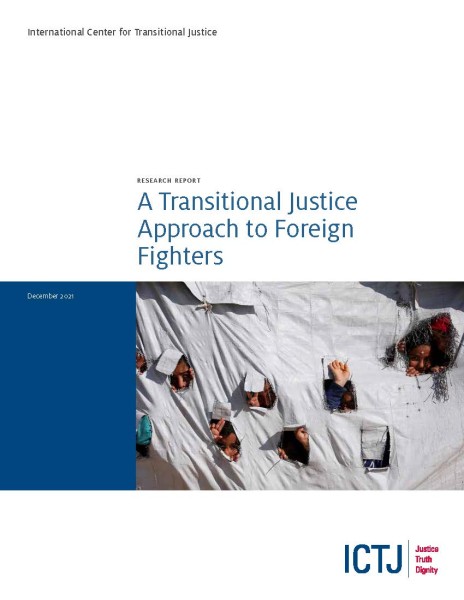We work side by side with victims to obtain acknowledgment and redress for massive human rights violations, hold those responsible to account, reform and build democratic institutions, and prevent the recurrence of violence or repression.
A Transitional Justice Approach to Foreign Fighters
This study explores a transitional justice approach to the dilemma of foreign fighters in violent conflict. Such an approach can help center human rights in comprehensive responses to foreign fighters, and shift the current focus from security and punishment to justice and long-term prevention. The challenges to such an approach include the phenomenon’s transnational dynamic and the association of foreign fighters with contexts of terrorism and violent extremism.

This research study examines the value of a transitional justice approach to the issue of foreign fighters in violent conflict. A transitional justice approach addresses the massive and serious human rights violations that are committed in conflicts involving significant numbers of people who traveled from another state to participate in them. Such an approach is based on the shared responsibility of states to meet their obligations derived from international human rights law and international humanitarian law. It is one that can help to center human rights considerations in responses to foreign fighters, thereby shifting the focus from security and punishment to justice and prevention. Transitional justice can help to develop a more comprehensive and coordinated set of responses to gross violations that account for the roles and responsibilities of a range of actors. In addition to providing justice to victims, transitional justice can help prevent the recurrence of the violence and abuse in which foreign fighters are often involved. A transitional justice approach includes interventions that promote accountability, truth, reparation, rehabilitation, reintegration, memory, and reform. These measures can be implemented in countries of origin and countries in or emerging from conflict. A transitional justice approach to requires dealing not just with foreign fighters themselves but with all of the abuses committed as part of the broader conflict or violence. The challenges that such an approach faces include the phenomenon’s transnational dynamic and the association of foreign fighters with contexts of terrorism and violent extremism. The report makes specific recommendations to countries of origin, countries in conflict, and the international community.